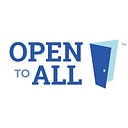Access and Accommodation: Disability Inclusion in the Workplace
Disability does not have a set definition or appearance. Whether a disability is a fact of birth or acquired later in life, its malleable nature requires that companies think actively about access and accommodation in the workplace. Access refers to the ability of someone to fully and equally use modification or assistance readily available if needed; accommodation would be the resources available. Typically, conversations around accessibility deal with the physical: the navigation of wheelchairs in a space or the location of ramps and elevators. However, this focus overlooks those who have other types of disabilities like vision impairment or deafness, resulting in a company potentially being unaware of or slow to provide resources to accommodate their needs. The lack of recognition of invisible disabilities like chronic illnesses, learning impairments, mental health conditions, and neurodivergence like AAHD and Autism Spectrum Disorders — as well as their stigmatization — can also prevent an employee from disclosing their disability, denying themselves and their employer the information necessary to acquire the resources for accommodation.
Creating an environment where disabled employees can succeed requires proactivity, an openness to feedback, and a dedication to fostering their career growth. The American Association of People with Disabilities (AAPD), a disability-led cross-disability civil rights organization, outlined several ways that companies can transform their workplaces by recruiting, engaging, and retaining disabled talent in a briefing with Open to All and partners.
1. Recruit from different talent pools. Organizations like vocational rehabilitation agencies, AAPD, the Jobs Accommodation Network, the Abilities Expo, and the Annual Conference on Independent Living are great starting points with whom to build relationships to proactively recruit disabled applicants. By actively posting in these forums and showing up to events designed for the disabled community, companies demonstrate their commitment to expanding resources to find disabled candidates rather than waiting for them to apply through traditional methods of recruitment.
The language used in job postings should also be reviewed for ableist language and standards. Many of the requirements can signal to disabled applicants that they need not apply. One of the most common, the call for a college degree, overlooks the fact that many disabled people are unable to access higher education due to inadequate accommodation and support. If a position needs specific experience rather than a specific degree, consider describing the exact experience instead.
Another requirement to reevaluate is the possession of a driver’s license. Some disabilities, whether physical, neurological, or otherwise, make driving an impossibility. This can inadvertently lead to discrimination, especially if the position does not necessitate the operation of a motor vehicle but instead mentions the need to travel to locations that are often accessible by public transportation, carpooling, or other methods. If the position does not require mandated travel in a vehicle to which the applicant has access, the requirement should be removed.
2. Support employee resource groups (ERGs). For new hires and established employees alike, employee resource groups are a space for those with shared identities to meet one another, develop lasting relationships, and foster inclusion. When creating an ERG specifically for disabled employees and allies, the language used to name the ERG — i.e., disabled vs. differently abled — should be discussed within the community to best describe their experience.
All ERGs, however, should have access to accommodations like interpreters, closed captioning, and CART for all meetings. Disability exists across all identities, regardless of age, race, gender, sexual orientation, and class. If a woman is in both the disabled and LGBTQ people’s ERGs, she should be able to access accommodations in both places. By having these resources available across the board, companies can support their employees beyond explicitly labeled spaces, making the organization inclusive for all.
3. Transform your organizational culture. There is no final destination to inclusivity: information changes, identities shift, and the work to accommodate those shifts continues. That being said, the aforementioned recruitment tactics and ERGs are tools that can be used in conjunction with other initiatives to guide an organization’s journey toward inclusion. Recognition of the anniversary of the Americans with Disabilities Act (ADA), National Disability Employment Awareness Month, disabled activists with intersecting identities, and other key moments in the disabled community’s history raise awareness while direct action like a centralized, organization-wide accommodation fund provides tangible benefits.
Though the thoughtful integration of those with disabilities into the workforce has always mattered, the realities of COVID and its long-term effects have required a reevaluation of both employee resources and the practicalities of how work is done.
The reality is any one of us could become disabled tomorrow. Disability is not merely a matter of time or birth; it is a matter of circumstance. Whether it be relearning the new possibilities of one’s body after dealing with a devastating illness/injury, or coping with a new environment that creates unknown limitations, we must have compassion and respect for ourselves and others that goes beyond platitudes and the occasional spotlight. By proactively considering the barriers we unconsciously create, eradicating them, and giving people the resources they need, we observe the totality of their identities and create an environment where everyone belongs.
Additional resources provided by AAPD:
● Disability Employment Statistics — Bureau of Labor Statistics
● Buying Power of People with Disabilities — American Institutes for Research
● Americans with Disabilities Act Definitions — Department of Justice
● Ableism Definition — TL Lewis
Conferences to recruit people with disabilities and learn more about the disability community:
● Association of University Centers on Disabilities
● National Council on Independent Living
Other Resources:
● Person First vs. Identity First language written by Lydia Brown
● Disability Equality Index (partnership between AAPD and Disability:IN)
● Disability Visibility: First Person Stories from the 21st Century by Alice Wong
● Demystifying Disability by Emily Ladau
